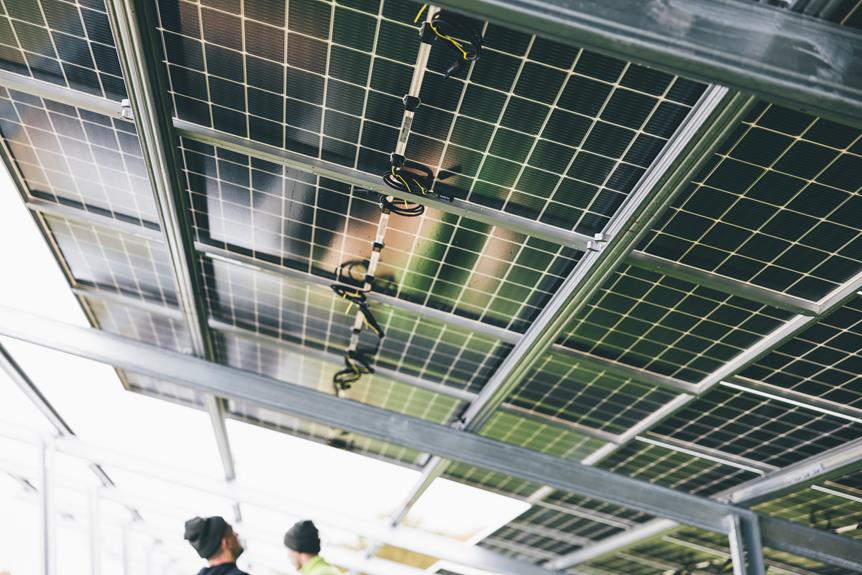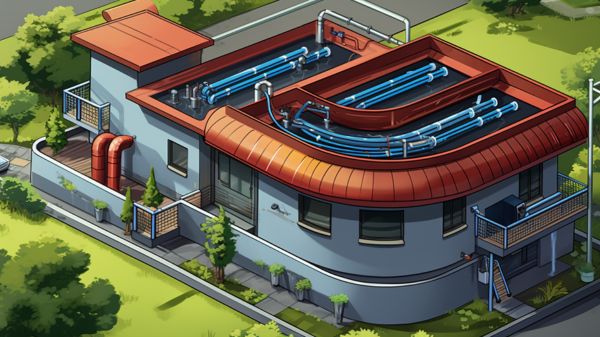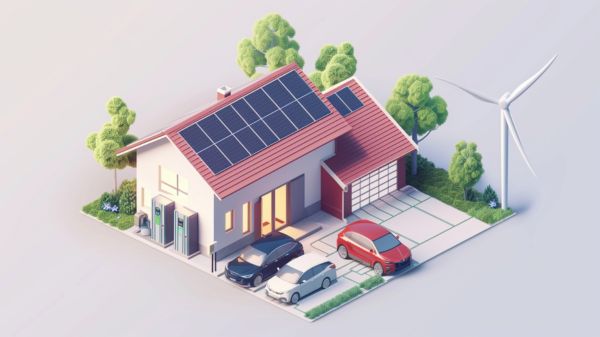7 Key Costs of Installing Renewable Energy Systems
Are you tired of skyrocketing energy bills? Look no further! We’ve got the ultimate guide to help you navigate the 7 key costs of installing renewable energy systems.
From the initial investment to maintenance and repairs, we’ll break down each expense and give you the insights you need. Get ready to join the green energy revolution and start saving money while reducing your carbon footprint.
Let’s dive in and discover the true costs of going green!
Initial Investment
How much will it cost us to make the initial investment in a renewable energy system? This is a crucial question to consider when exploring the feasibility of transitioning to renewable energy.
The initial investment refers to the upfront costs associated with installing the system, including the purchase of equipment, installation fees, and any necessary upgrades to existing infrastructure. While the initial investment may seem daunting, it’s important to evaluate the long-term benefits it can bring.
One key aspect to consider is the return on investment (ROI). By investing in renewable energy, not only can you reduce your reliance on fossil fuels, but you can also potentially save money in the long run. The ROI is determined by factors such as energy savings, cost recovery through incentives or rebates, and the potential for selling excess energy back to the grid.
Understanding the costs and potential returns of the initial investment is essential in making informed decisions about renewable energy systems.
Equipment and Installation Costs
The equipment and installation costs for a renewable energy system can vary depending on the type and size of the system.
When it comes to equipment costs, it’s crucial to consider the specific technology, such as solar panels, wind turbines, or geothermal heat pumps, along with any necessary supporting equipment like inverters or batteries. Additionally, factors like the size of the system and the desired energy output will also impact the equipment costs.
Installation costs include labor, permits, and any necessary modifications to the existing infrastructure. It’s important to carefully evaluate cost-effective options to ensure a reasonable return on investment.
Comparing quotes from different contractors and considering the long-term savings in energy bills can help determine the most financially viable option.
Permitting and Regulatory Fees
One of the key costs of installing renewable energy systems are the permitting and regulatory fees. These fees are necessary to ensure that the installation meets all the necessary requirements and regulations set by the government and other governing bodies.
The permitting process can be complex and time-consuming, as it involves obtaining various permits and approvals from different agencies. Each agency may have its own set of requirements and regulations that need to be met, adding to the overall cost of the installation.
Additionally, regulatory requirements may include environmental impact assessments, grid interconnection studies, and compliance with safety standards. These requirements are put in place to ensure that the renewable energy system is installed and operated in a safe and environmentally responsible manner.
Therefore, it’s important for renewable energy system installers to factor in these permitting and regulatory fees when estimating the total cost of the installation.
Maintenance and Repairs
To ensure the continued operation and efficiency of renewable energy systems, we must address the number of maintenance and repair tasks that are required. Regular maintenance is essential to keep the system running smoothly and prevent costly breakdowns.
Creating a maintenance schedule is crucial to stay on top of routine tasks such as cleaning panels, inspecting connections, and checking for any signs of wear and tear. It’s also important to have troubleshooting tips readily available to quickly identify and resolve any issues that may arise.
Insurance and Warranty Expenses
For our renewable energy system, we need to account for the expenses associated with insurance and warranty coverage.
Insurance coverage is crucial to protect our investment in case of unforeseen events, such as natural disasters or equipment failure. It provides peace of mind and financial security, ensuring that any damages or losses will be covered.
Extended warranties are also important as they offer additional protection beyond the standard manufacturer’s warranty. They provide an extra layer of security, giving us confidence that our renewable energy system will be repaired or replaced if any issues arise during the warranty period.
Having comprehensive insurance coverage and extended warranties not only safeguards our investment but also fosters a sense of belonging to a community that prioritizes renewable energy and sustainable practices.
Financing and Loan Interest
Our financing options and loan interest are significant factors to consider when installing our renewable energy system. The availability of financing options can greatly impact the overall cost and feasibility of the project. It’s important to research and compare different options to find the most favorable terms and conditions.
Some common financing options include loans from financial institutions, government grants, and third-party financing arrangements. When evaluating loan options, it’s crucial to carefully review the terms and conditions, including interest rates, repayment periods, and any additional fees. Understanding the loan agreement is essential to ensure that the financing aligns with our financial capabilities and long-term goals.
Tax Incentives and Rebates
One important aspect to consider when installing renewable energy systems is the number of tax incentives and rebates available. These incentives and rebates can significantly reduce the overall cost of the system and make it more affordable for homeowners or businesses. Here are three key points to consider:
- Tax Credit Eligibility: Before applying for any tax credits, it’s important to determine whether you’re eligible. This may involve meeting certain criteria such as the type of renewable energy system being installed, its capacity, and the location of the property.
- Application Process: Once you determine your eligibility, you’ll need to go through the application process. This typically involves gathering and submitting documentation, such as proof of purchase and installation, and completing the necessary forms. It’s important to carefully follow the instructions provided by the relevant government agency or organization.
- Financial Benefits: The tax incentives and rebates available can provide significant financial benefits. They can help offset the upfront costs of installing renewable energy systems and can also provide long-term savings through reduced energy bills. This can create a sense of financial security and belonging within the renewable energy community.
Understanding the tax incentives and rebate programs available and navigating the application process can be complex. However, the potential financial benefits make it a worthwhile endeavor for those looking to invest in renewable energy systems.
Conclusion
In conclusion, while there are various costs associated with installing renewable energy systems, the long-term benefits outweigh the initial investment.
One anecdote that illustrates this is the story of a small business owner who installed solar panels on their roof. Despite the upfront costs, their energy bills significantly decreased, allowing them to save money in the long run.
This highlights the metaphorical idea that investing in renewable energy is like planting a seed that grows into a fruitful tree of financial savings and environmental sustainability.






